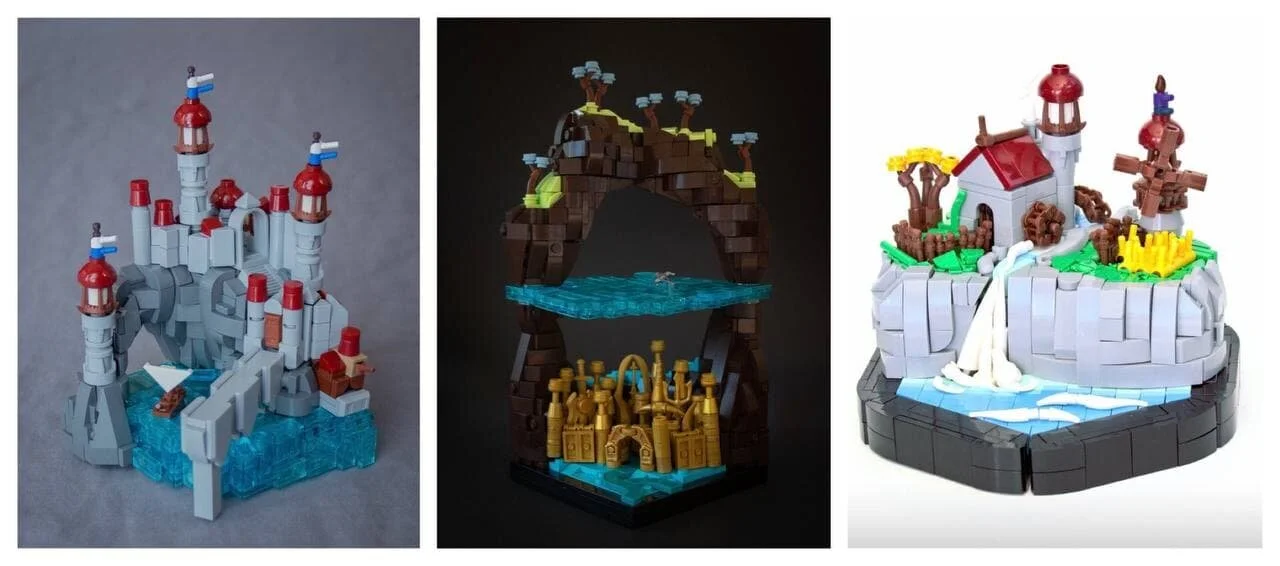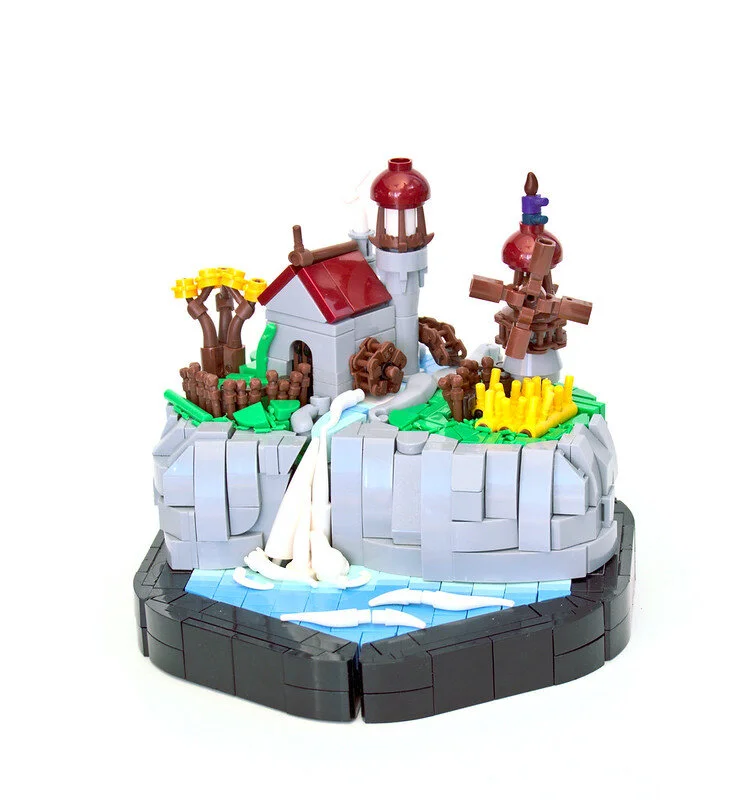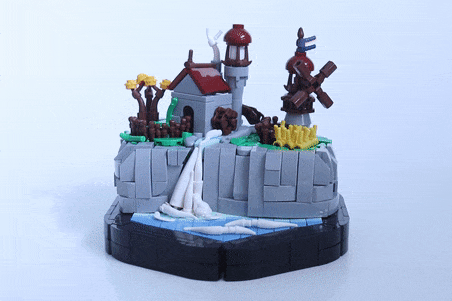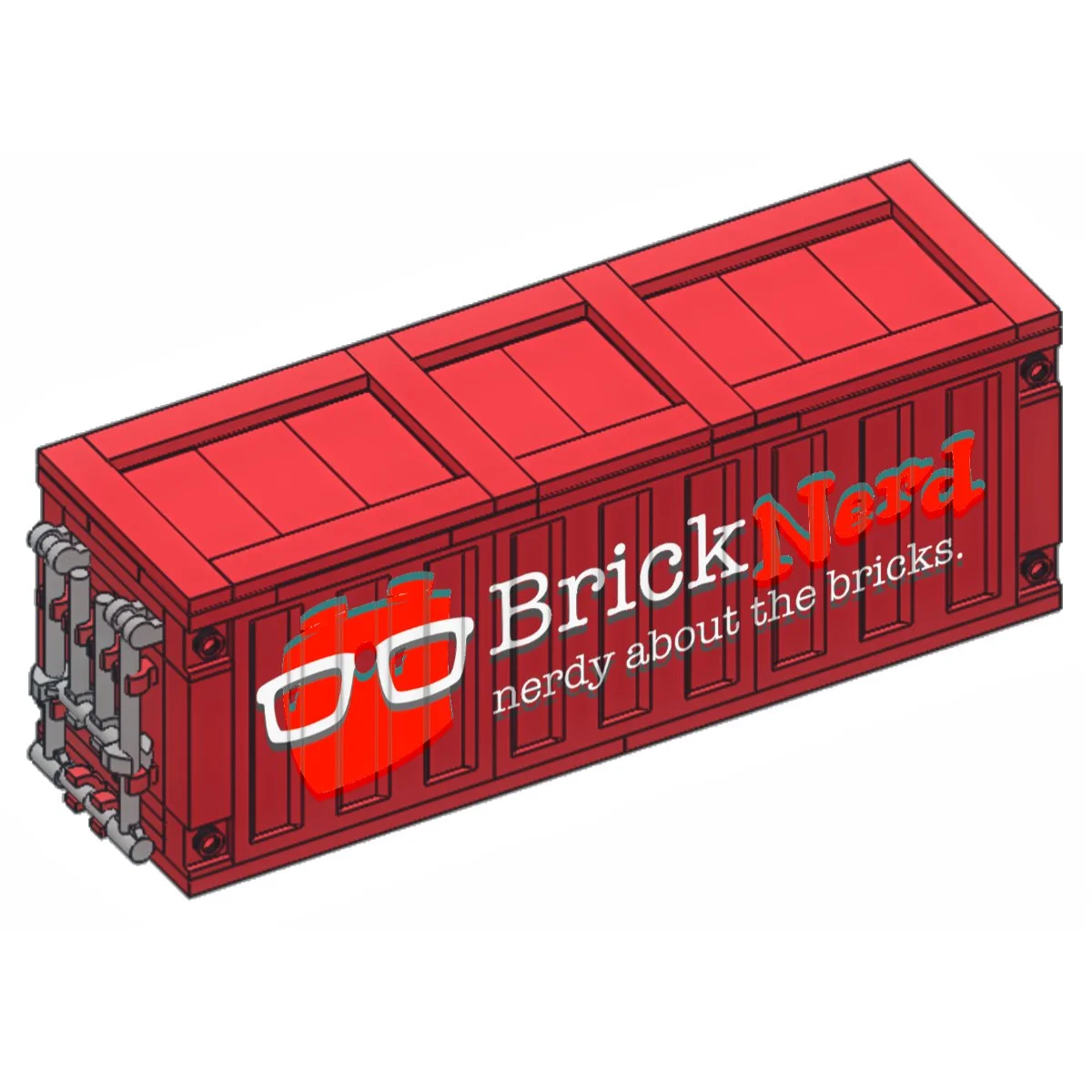Roanoke Handybuck and his Micro Meek Creek Village
/LEGO has a vast encyclopedia of parts for creating scenes from the past to the future, from the realistic to fantasy. Many of these parts appear to have a prescribed usage such as minifigure hands, wizard wands, and paintbrushes. With so many options it can be hard to “see through the pieces” when looking through your LEGO collection.
Microscale builds are a fantastic way to be clever with your parts usage. There are many talented builders who have mastered the technique of the micro-build, but one builder that recently caught my eye is Roanoke Handybuck. At first glance, his micro-builds are instantly recognizable—a mandatory element for success. You clearly see his beautiful designs come through as a water mill, a castle, or a house on a hill. When you zoom in you see how the magic happens.
What caught my eye most recently was a little white frog. The LEGO frog first appeared in a Belleville set more than 20 years ago and has gone through a few colorations since then. Until the 2021 release of the Bonsai Tree, the frog has always been, well, a frog (with a few rare exceptions). Roanoke saw through the generic use of this little creature and turned it into waterfall foam in his latest build called “Meek Creek Village.”
Another element that comes up a lot is the minifig hand. In this build, it becomes a tree branch, a flag (attached to a paintbrush), a wisp of smoke, and a field of wheat. This is a great demonstration of how color and placement can completely change the look of a single element.
But this little MOC has a feature that many micro-builds do not include—motion! When you turn the crank on the back, the watermill rotates and the windmill spins!
Despite what his handle may imply, Roanoke Handybuck is not actually a Hobbit from the Shire. Hadden is an accomplished AFOL who loves to build in the castle genre and draws a lot of inspiration from JRR Tolkein’s Lord of the Rings books. Like many LEGO builders, he also loves to derive ideas from other AFOLs in the community like Markus Rollbühler (rolli), Eli Willsea (forlornempire), and Grantmasters.
Here is a build by Roanoke called “Ancient Myths of What Lies Beneath.” Notice all the gold pieces he used in non-traditional ways to create the underwater castle.
How does Hadden turn a white frog into waterfall foam and a minifig hand into a field of wheat? When we reached out to him, he said one thing he does is keep small parts of the same color together that are useful for greebling. When building his waterfall, he thought the shape of the white frog would be good to use. Some elements he keeps together regardless of color, like his minifig hands. His favorite elements are the cheese slope because of its geometry and the headlight brick because of its versatility.
Roanoke’s first micro-build was this sweet little house atop a grassy hill. The most unique feature of this MOC is the use of minifig hair pieces for trees!
Micro-builds are a fun way to create a large scene using fewer pieces and it’s always an excellent practice in using pieces creatively. If you’re struggling to get started, check out some of the talented builders mentioned in this article and check out our LEGO building competitions round-up to find inspiration.
What have been the best instances of using a frog, minifig hand or paintbrush in a microscale MOC that you have seen? Let us know in the comments below!
Do you want to help BrickNerd continue publishing articles like this one? Become a patron to show your support, get early access, exclusive swag and more.























